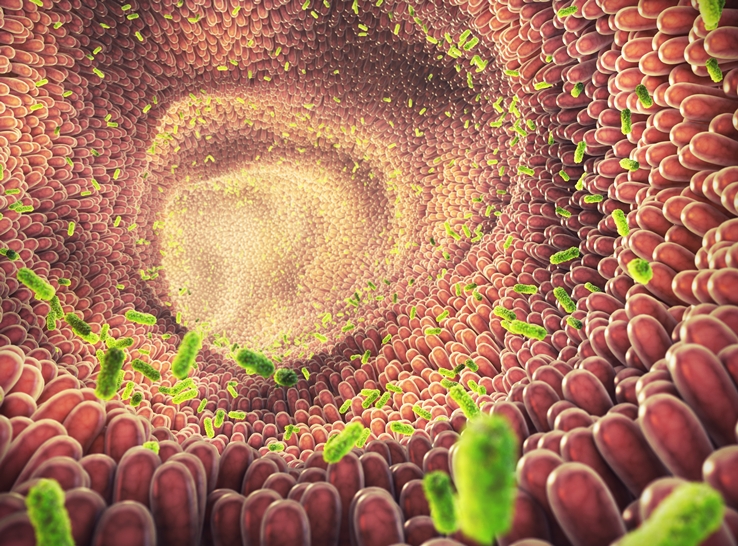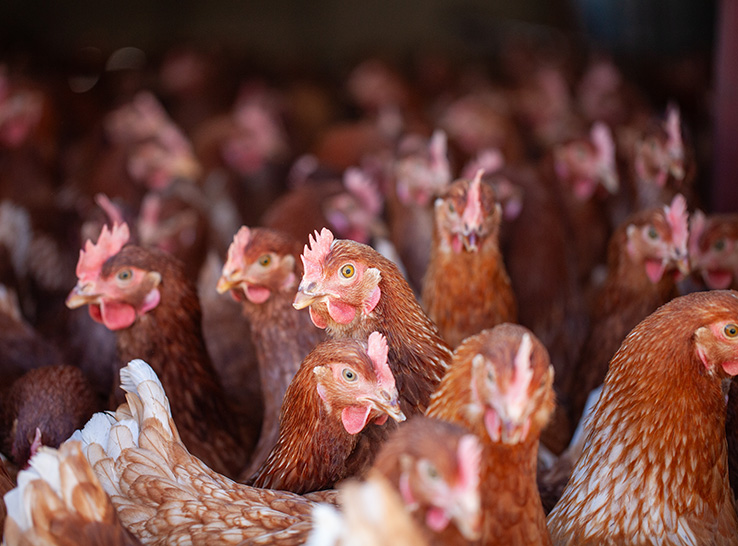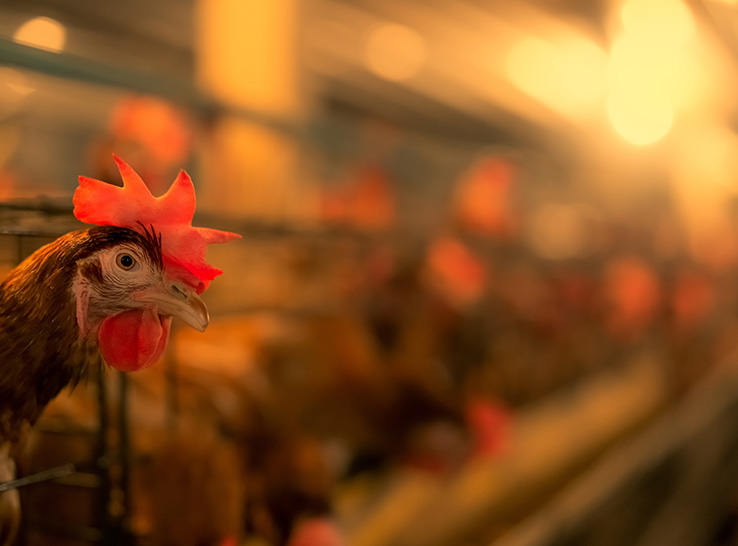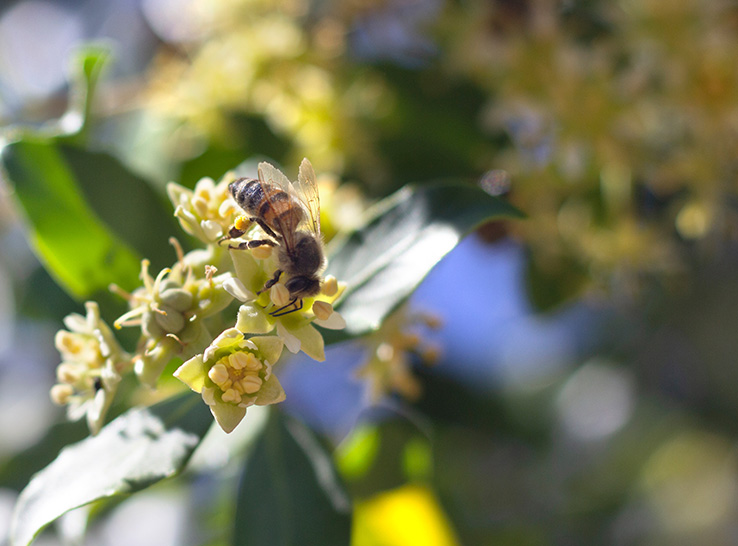By Aaron Stephan, PhD
Research and Innovation Director
ONCE by Signify
When we think of flickering light, our minds conjure images of candles casting fitful shadows or perhaps the occasional power outage dimming our surroundings. Yet, in the realm of lighting technology, this phenomenon goes by a more precise name: temporal light modulation (TLM).
Defined as the fluctuation of luminous or color quantities over time, TLM occurs not only in our natural environment but also within man-made electrical luminaires. As we explore the intricacies of TLM, we’ll uncover its effects on both humans and poultry, shedding light on a topic that bridges science and practical illumination. With a better understanding of this topic, poultry producers will be able to better measure and manage TLM and its effects on poultry.
Sources of flicker
TLM commonly occurs in nature. The daily rhythms of sunrise and sunset, for example, cause extreme changes in intensity and spectrum, albeit on a slow time scale. (Figure 1.)
Figure 1. Temporal Light Modulation (TLM) – changes of light over time
Animals often experience TLM as dappled sunlight shimmering through leaves on trees or sun glitter reflecting off dimpled bodies of water. In a negative context, if a predator bird such as a hawk or osprey flies overhead and casts a shadow, TLM can cause fear and distress to a prey species.
When light is generated from electrical luminaires, the oscillating nature of the electrical power supply and the driving mechanism can also result in TLM. For instance, AC power mains are supplied as a 50 to 60 Hz oscillating positive and negative voltage.
Conventional incandescent lamps heat and cool proportionally to the voltage, emitting (or “incandescing”) light exhibiting TLM at 100 to 120 Hz. Compact fluorescent lamps, the successor to incandescent lamps, are driven with an electronic ballast that is frequently driven at the same frequencies.
Today, modern LED luminaires can be powered and driven by various means, often exhibiting TLM at frequencies much faster than previously experienced, such as 1,000 Hz or higher. This is usually due to dimming LEDs with a mechanism called “pulse-width modulation,” which uses high-frequency, square-wave pulses, whereby the “on” and “off” times are controlled to determine the level of dimming.
Biological perception of TLM
The existence of TLM often raises the question of potential health concerns for people and poultry:
- For people, perceptible TLM has been documented to cause health effects, including eye strain, migraines, anxiety, panic attacks and even epileptic seizures. Because of these health effects, building codes have been defined for acceptable TLM types deemed safe for human occupancy.
- For poultry dwellings, no such standards yet exist. Instead, we need to understand how TLM is perceived and how to mitigate its effects.
Visual perception of light occurs in the eye by specialized photoreceptor cells called rods and cones. The molecular signaling pathway leading from light absorption to perception is kinetically limited, meaning they take time to occur. Because the light-perception signaling process is slow, fast changes in light cannot be perceived by the observer.
For example, most modern televisions and computer monitors have a refresh rate of 120 Hz, but people cannot perceive that fast of a TLM. Instead, we perceive fast modulation TLM as constant, unmodulated light.
The threshold of TLM frequency that is perceivable by an observer is called the critical-fusion frequency (CCF). The average CCF for people is ~83 Hz, but there is a natural distribution of CCFs among individuals; it is also dependent on light intensity, percent modulation and the individual’s age and neurological state.
For birds, the reported CCF range is from 75 Hz for pigeons to 138 Hz for flycatchers.1 This difference likely represents the need for faster temporal perception in species that are catching fast-moving food sources.
For poultry, the reported CFF in chickens is 75 to 87 Hz.2,3,4,5,6 Therefore, the difference in sensitivity to TLM between humans and chickens is quite unsubstantial.
As with humans, TLM is expected to have biological effects on poultry only if it is perceivable. Therefore, TLM with frequencies considerably higher than the CFF (~87 Hz for chickens) are generally considered safe for the observer.
Studies with layers and turkeys
Newly published research led by Dr. Karen Schwean-Lardner at the University of Saskatchewan has evaluated the effects of 30, 90 and 250 Hz TLM on layer pullets and layers.7
The study indicated that 30 Hz and 90 Hz TLM minimally affected pullet behavior, fear and stress in younger pullets, but the effects were not noted later in life. Moreover, after the pullets were moved to a non-TLM layer house, no statistically significant negative impacts of TLM were observed on layer production or behavior.
A second study from the same group looked at the impacts of flicker on turkey hens.8 The results of that study indicated that a flicker of 30 Hz, well below the expected CFF for turkeys, resulted in inferior growth for the first 4 weeks of age.
Measuring TLM
Given that some TLM is perceivable and may have negative effects on humans or poultry, while other TLM is imperceivable and may not have any discernable effects, how do we measure TLM to determine whether a given TLM has biological effects?
As mentioned previously, frequencies higher than the CFF for a given species will be imperceptible by the observer. However, frequencies lower than the CFF may also be imperceptible, depending on the modulation depth.
Modulation depth refers to the differences between the periodic high intensities versus the lowest parts. It can be expressed as percent modulation on a scale of 0 to100% or as flicker index from 0 to1. Generally speaking, higher percent-modulation depths or higher flicker indices will be more likely to be perceived, only if the frequency is below the CFF.
Given that perceptible flicker occurs only at frequencies lower than the CFF with high-flicker indices, neither frequency nor flicker index alone is sufficient to define if flicker is visible. For that reason, the lighting industry has adopted a metric called “PstLM” to quantify short-term light modulation.
This measure, which is calibrated for humans, simply states that a value above 1 is likely to be perceived, and a value less than 1 is unlikely to be perceived. PstLM considers frequency, percent modulation and waveform. However, because it is a human-specific measurement, it is not adequate for poultry.
Understanding avian flicker visibility
To address this need, scientists have proposed a bird-specific measure. Like PstLM, it considers the frequency, percent modulation and waveform, but it is calibrated to published bird sensitivities. This metric, termed the avian flicker-visibility metric (AFVM), is useful in determining if the TLM is perceptible by birds.9
An AFVM greater than 1 may be perceptible and a value less than 1 is unlikely to be perceptible. Because some birds are more sensitive to TLM than others, the AFVM is quite conservative for poultry. AFVM can be measured by a poultry-specific light meter available from ONCE By Signify or determined ad hoc by applying the AFVM function to an available TLM recording.
Conclusion
TLM is a property of artificial light sources that needs to be considered. While humans exhibit health effects from perceptible TLM — ranging from ocular discomfort to neurological responses — poultry, particularly chickens, display a subtle sensitivity.
The CCF represents the threshold below which TLM becomes detectable and plays a pivotal role. Ongoing research investigates poultry behavior and stress levels under varying TLM frequencies, with few or minor negative impacts observed thus far.
Measures such as the AFVM and PstLM guide us toward balanced lighting solutions that optimize both human and poultry well-being. As we continue to illuminate our world, understanding TLM’s nuances ensures responsible lighting practices in diverse environments.
Note: This topic was the subject of a webinar sponsored by ONCE on July 2, 2024. The webinar speakers included Karen Schwean-Lardner, PhD, University of Saskatchewan, as well as Dragan Sekulovski, PhD, a lighting perception expert at ONCE By Signify. The recorded webinar can be accessed here.
References
1 Potier S, Lieuvin M, Pfaff M, Kelber A. How Fast Can Raptors See? J Exp Biol. 2020 Jan 2;223 no. (Pt 1):jeb209031. https://doi.org/10.1242/jeb.209031.
2 Jarvis, JR, Taylor NR, Prescott NB, Meeks I, Wathes CM. Measuring and Modelling the Photopic Flicker Sensitivity of the Chicken (Gallus g. Domesticus). Vision Res. 2002 Jan;42(1):99-106. https://doi.org/10.1016/S0042-6989(01)00268-1.
3 Lisney TJ, Ekesten B, Tauson R, Håstad O, Ödeen A. Using Electroretinograms to Assess Flicker Fusion Frequency in Domestic Hens Gallus Gallus Domesticus. Vision Res. 2012 June;62:125-33. https://doi.org/10.1016/j.visres.2012.04.002.
4 Prescott NB, Wathes CM, Jarvis J. Light, Vision and the Welfare of Poultry. Anim Welf. 2003 May;12: 269-88.
5 Railton RCR, Foster TM, Temple W. A Comparison of Two Methods for Assessing Critical Flicker Fusion Frequency in Hens. Behav Processes. 2009 Feb;80(2):196-200. https://doi.org/10.1016/j.beproc.2008.11.016.
6 Rubene D, Håstad O, Tauson R, Wall H, Ödeen A. The Presence of UV Wavelengths Improves the Temporal Resolution of the Avian Visual System. J Exp Biol. 2010 Oct;213(19):3357-63. https://doi.org/10.1242/jeb.042424.
7 McPhee S, Shynkaruk T, Buchynski K, Crowe T, Schwean-Lardner K. How Does Visible Light Flicker Impact Laying Hen Pullet Behavior, Fear, and Stress Levels? Poult Sci. 2024 June;103(6):103713. https://doi.org/10.1016/j.psj.2024.103713.
8 Hammond A, Buchynski K, Shynkaruk T, Crowe T, Schwean-Lardner K. Are Turkey Hens Affected by Light Flicker? Effects on Performance and Health. Poult Sci. 2024 June;103(6):103747. https://doi.org/10.1016/j.psj.2024.103747.
9 Sekulovski D, Perz M, Stephan A. AFVM-The Avian Flicker Visibility Metric. CIE. 2021. DOI:10.25039/x48.2021.PO03








